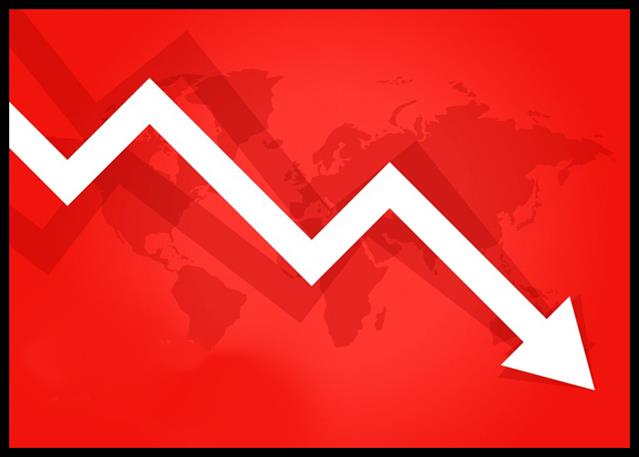Asian Markets A Sea Of Red
Asian stock markets are a sea of red on Tuesday, following the broad sell-off on Wall Street overnight, as bond yields spiked after a report showed a much stronger than expected U.S. retail sales grow...

Asian stock markets are a sea of red on Tuesday, following the broad sell-off on Wall Street overnight, as bond yields spiked after a report showed a much stronger than expected U.S. retail sales growth in March. The data led to renewed concerns the US Fed will hold off on lowering interest rates in June. Traders also remained concerned about geopolitical tensions in the middle-east. Asian markets closed mostly lower on Monday.
Following the latest data, CME Group’s FedWatch Tool is currently indicating just a 21.6 percent chance of a quarter point rate cut in June.
Adding to the losses in the previous three sessions, the Australian stock market is sharply lower on Tuesday, following the sharp sell-off Wall Street overnight. The benchmark S&P/ASX 200 is falling a tad below the 7,600 level, with losses across most sectors led by gold miners and technology stocks.
The benchmark S&P/ASX 200 Index is losing 154.40 points or 1.99 percent to 7598.10, after hitting a low of 7,597.10 earlier. The broader All Ordinaries Index is down 159.30 points or 1.99 percent to 7,850.10. Australian stocks closed slightly lower on Monday.
Among the major miners, Rio Tinto and Fortescue Metals are losing more than 1 percent each, while BHP Group is down almost 1 percent and Mineral Resources is declining more than 2 percent.
Oil stocks are mostly lower. Santos and Woodside Energy are losing more than 1 percent each, while Origin Energy and Beach energy are down almost 1 percent each.
Among tech stocks, WiseTech Global is edging down 0.5 percent, Zip is declining more than 3 percent, Afterpay owner Block is slipping almost 5 percent, Xero is losing more than 1 percent and Appen is sliding more than 3 percent.
Gold miners are mostly lower. Newmont is down almost 1 percent, Resolute Mining is declining more than 6 percent and Gold Road Resources is losing more than 2 percent, while Evolution Mining and Northern Star resources are edging down 0.2 percent each.
Among the big four banks, Commonwealth Bank and Westpac are losing more than 1 percent each, while National Australia Bank and ANZ Banking are declining almost 1 percent each.
In the currency market, the Aussie dollar is trading at $0.641 on Tuesday.
Adding to the losses in the previous session, the Japanese stock market is sharply lower on Tuesday, with the Nikkei 225 falling to be a tad above the 38,400 level, mirroring the broadly sell off on Wall Street overnight, with losses across most sectors led by index heavyweights and technology stocks.
The benchmark Nikkei 225 Index closed the morning session at the day’s low of 38,405.58, up 827.22 points or 2.11 percent. Japanese shares ended notably lower on Monday.
Market heavyweight SoftBank Group is losing almost 3 percent and Uniqlo operator Fast Retailing is declining more than 2 percent. Among automakers, Honda is losing almost 2 percent and Toyota is down 2.5 percent.
In the tech space, Advantest is losing almost 4 percent, Tokyo Electron is declining more than 4 percent and Screen Holdings is down more than 3 percent.
In the banking sector, Sumitomo Mitsui Financial, Mizuho Financial and Mitsubishi UFJ Financial are losing almost 1 percent each.
The major exporters are mostly weak. Canon is losing almost 1 percent, Mitsubishi Electric is declining almost 2 percent and Panasonic is edging down 0.1 percent, while Sony is edging up 0.4 percent.
Among the other major losers, J. Front Retailing and Isetan Mitsukoshi are plunging almost 6 percent each, while Kawasaki Kisen Kaisha is losing more than 4 percent. Resonac Holdings and Disco are down almost 4 percent each, while Socionext, Tokyu Fudosan, Tokio Marine, Sumitomo Realty & Development, Lasertec, Fujikura, TDK and ENEOS Holdings are all declining more than 3 percent each.
Conversely, Toho is surging more than 8 percent and Nidec is gaining almost 6 percent, while Olympus and Hoya are advancing almost 3 percent each.
In the currency market, the U.S. dollar is trading in the lower 154 yen-range on Tuesday.
Elsewhere in Asia, is up 1.5 percent, while Hong Kong, South Korea, Taiwan and Indonesia are lower by between 1.5 and 2.5 percent, while New Zealand, China, Singapore and Malaysia are lower by between 0.5 and 1.0 percent each.
On Wall Street, stocks showed another substantial move to the downside over the course of the trading session on Monday following the steep drop seen last Friday. The major averages moved notably higher early in the session, but pulled back sharply as the day progressed.
The major averages all closed firmly in the red, with the tech-heavy Nasdaq showing a particularly steep drop. The Nasdaq plunged 290.08 points or 1.8 percent to 15,885.02, the S&P 500 tumbled 61.59 points or 1.2 percent to 5,061.82 and the Dow slid 248.13 points or 0.7 percent to 37,735.11.
Meanwhile, the major European markets turned in a mixed performance on the day. While the U.K.’s FTSE 100 Index fell 0.4 percent, the French CAC 40 Index rose by 0.4 percent and the German DAX Index climbed by 0.5 percent.
Crude oil prices fell on Monday amid slightly easing concerns about supply disruptions after Iran’s drone and missile attack on Israel did not cause any big damage. Concerns about the outlook for oil demand in China and a strong U.S. dollar also weighed on oil prices. West Texas Intermediate Crude futures for May ended lower by $0.25 at $85.41 a barrel.
- Check out our free forex signals
- Follow the top economic events on FX Leaders economic calendar
- Trade better, discover more Forex Trading Strategies
- Open a FREE Trading Account



